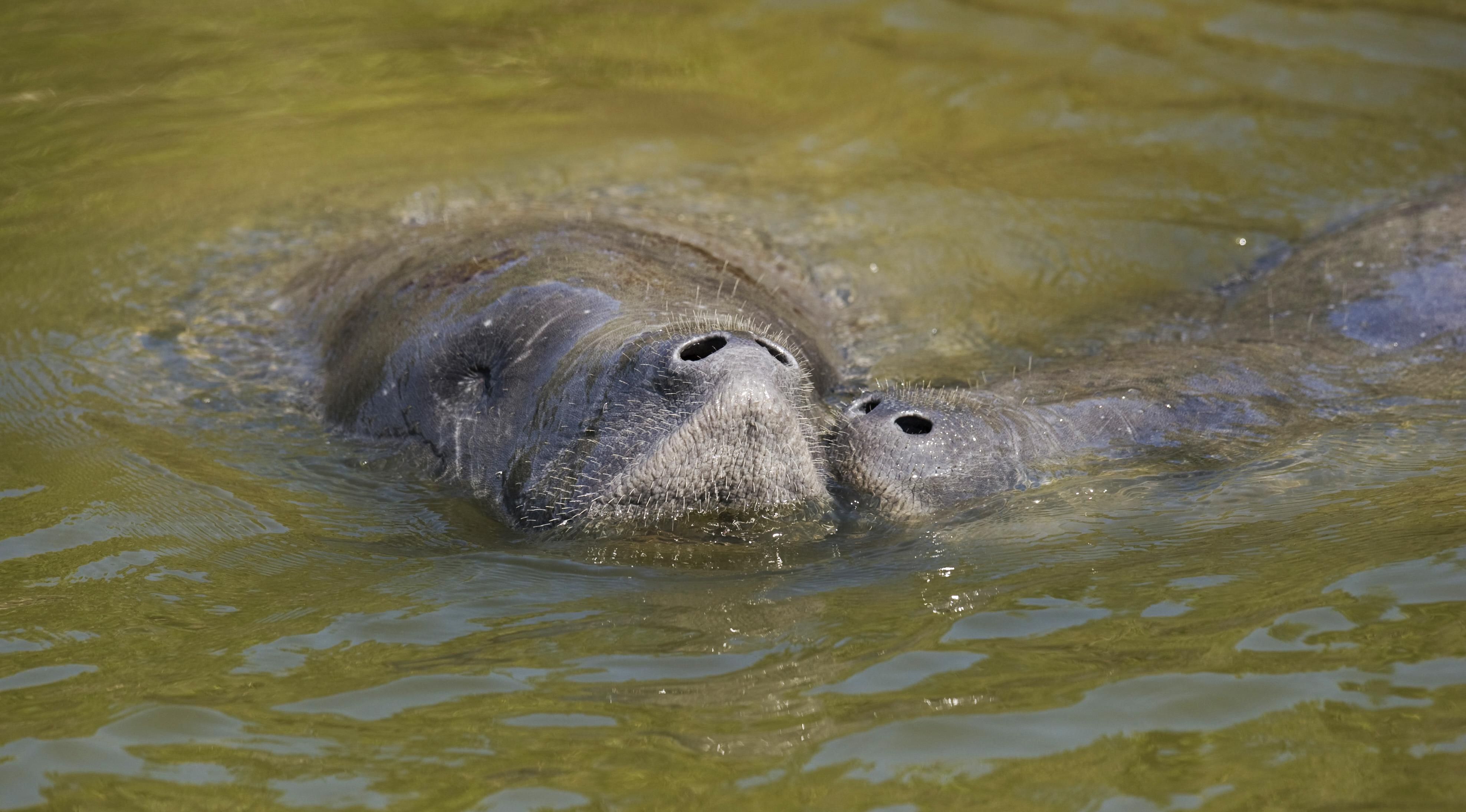Crime is Slate’s crime blog. Like us on Facebook, and follow us on Twitter @slatecrime.
Of all the dumb things you can film yourself doing, jumping on top of a manatee is one of the dumbest. Yes, manatees sort of look like gigantic living sea pillows. But they’re not, and jumping on top of them will not result in a fluffy, comfortable experience. Instead, it will result in possible bodily harm for the manatee and a possible prison sentence for the thoughtless jumper.
Last year, two unidentified Florida men filmed a friend jumping on top of two manatees. Then, they posted that video to YouTube.
If these ignorant yokels had been reading my blog, they’d know that posting self-incriminating videos online is never a good idea, primarily because the police have Internet access, too. As always happens, the cops found out; now, these guys might be facing federal manatee harassment charges.
If you’re surprised to learn that harassing a manatee is a crime, well, then you’re probably not a Floridian. Manatees have a lot of powerful friends in the Sunshine State, and they need them—recent estimates put the total manatee population at between 4,000 and 5,000. The state has had laws on the books restricting manatee killing since 1893; in 1978, the state legislature passed the Manatee Sanctuary Act, which, among other things, prohibited manatee harassment.
But when—and why—did manatee harassment become a federal crime? Craig Pittman of the Tampa Bay Times literally wrote the book on manatees: 2010’s Manatee Insanity, which is a very entertaining read about manatee politics in the state of Florida. (Get it for your Kindle!) Pittman tells me that manatee safety became a matter of federal concern thanks to the efforts of a biologist named Woodie Hartman, who testified to Congress in the 1970s while it was considering the Marine Mammal Protection Act. Hartman, the first man to comprehensively study manatees in their natural habitat, showed Congress a slideshow of manatees that had been chewed up by boat propellers. His testimony and visual aids helped ensure the act’s passage.
The Endangered Species Act, signed into law in 1973 by noted conservationist Richard Nixon, took the MMPA a step further by defining the term “harass” as:
an intentional or negligent act or omission which creates the likelihood of injury to wildlife by annoying it to such an extent as to significantly disrupt normal behavioral patterns which include, but are not limited to, breeding, feeding, or sheltering.
Jumping on a manatee’s back certainly constitutes harassment under the ESA, and if the government decides to bring charges, these men could face a year in prison and/or a hefty fine. “The only place you can legally touch a wild manatee is in Woodie Hartman’s old stomping grounds, Crystal River,” notes Pittman, “where thanks to Woodie’s work they’ve been attracting tourists with ‘swim with the manatee’ tours since before the MMPA and ESA passed.”
But, as Pittman notes, these laws don’t stop annoying people from annoying manatees. He passed along this video, from Sarasota, in which a woman attempts to ride a manatee as if it were a personal watercraft. And late in 2012, a St. Petersburg-area woman was filmed doing the exact same thing. “Go ride a Jet Ski. Don’t use animals,” said the local sheriff at the time. Words to live by.
